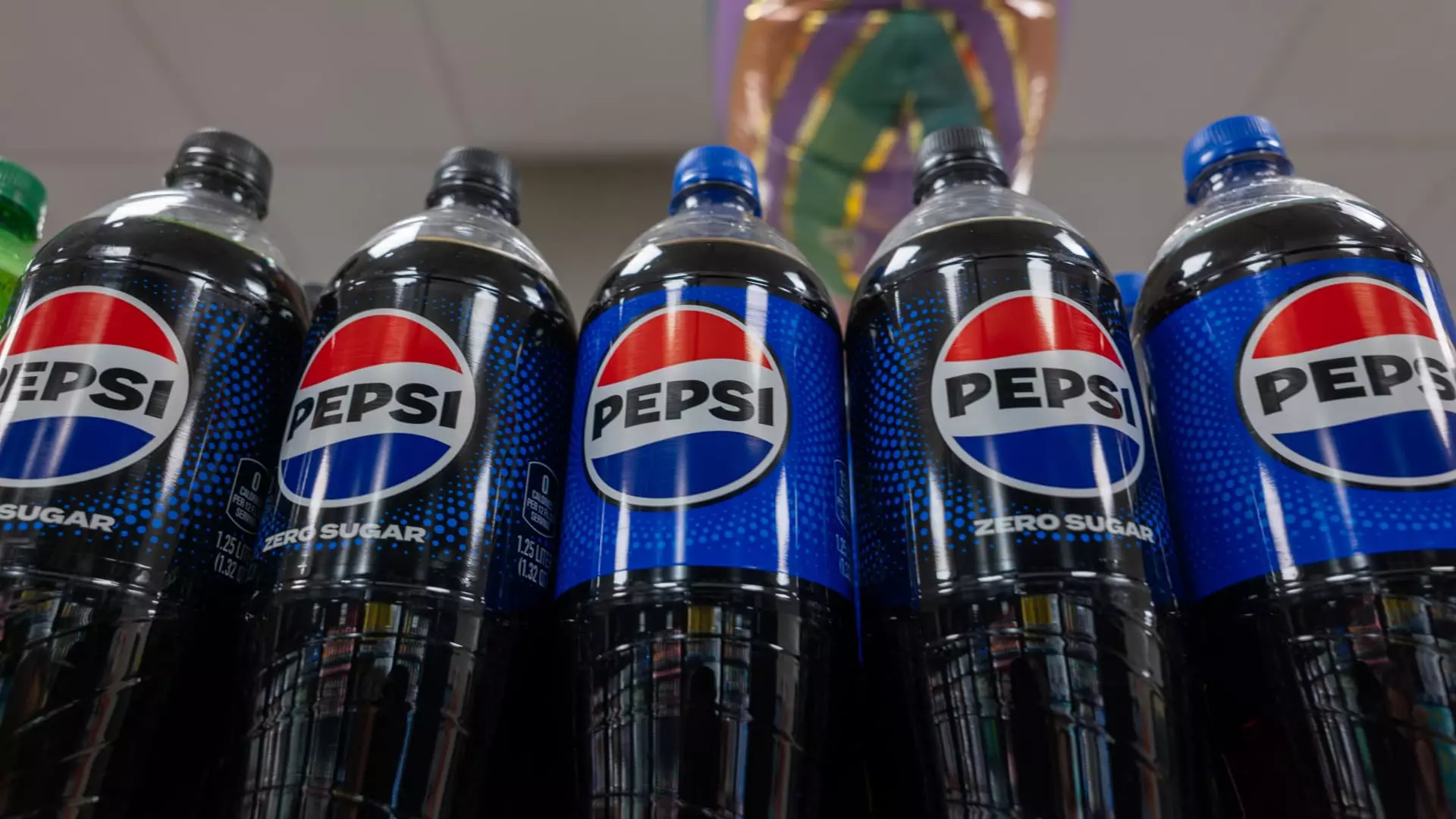PepsiCo’s latest quarterly results reveal a stark contrast that echoes through Wall Street. On one hand, international sales momentarily buoyed the company’s overall performance, but the reality in North America tells a different story—one fraught with challenges. The global beverage and snack titan appears to be grappling with rising tariffs and economic uncertainties, which have prompted it to revise its earnings forecasts and project a bleak outlook for future consumer behavior. This duality in earnings performance raises pressing questions for investors about the company’s strategic direction and adaptability amid shifting market dynamics.
Economic Tides and Tariff Troubles
CEO Ramon Laguarta’s statement highlighted growing concerns over economic volatility and the impact of new trade tariffs that are weighing heavily on supply chain costs. Historically, financial planners and analysts have raised a cautionary flag when companies revise forecasts downward, as consumers tend to react swiftly to market instability. The fact that PepsiCo has openly acknowledged these risks is worrying; it suggests that the executives are not merely reactive but are entering a phase of defensive positioning. As tariffs erode margins, investor confidence wanes, evidenced by the 2% drop in the company’s shares during premarket trading.
Consumer Behavior Under Siege
Laguarta and CFO Jamie Caulfield’s remarks on consumer behavior hint at a fundamental shift—not just a temporary hiccup. A consumers’ increasing value-consciousness, born from inflationary pressures, is reshaping food shopping patterns in ways that traditional marketing might not counteract. Companies like PepsiCo, which historically thrived on brand loyalty, may now find themselves at the mercy of a more discerning shopper landscape. The tangible drop in volumes across both food and beverage units indicates that even iconic brands cannot escape changing consumer sentiments.
Strategic Missteps and Market Perception
As PepsiCo sets its sights on the North American market, its strategies to diversify product offerings into multicultural and functional domains could either be a game-changer or mere window dressing. Venturing into prebiotic sodas and brands like Simply and Quaker may attract new customer segments, but this diversification strategy risks diluting the company’s core identity. Engaging consumers and enhancing product placement in stores sounds promising on paper, but the disconnect between strategies and execution often leads to failure in real-life applications. There’s a fine line between innovative adaptations and strategic missteps, and PepsiCo’s current trajectory seems to teeter precariously.
Market Position and Future Growth
PepsiCo’s earnings per share of $1.48 was slightly below expectations, and although their revenue of $17.92 billion outpaced forecasts, a decrease in net income signals a more significant problem underneath the surface. Organic revenue growth of only 1.2% is far from impressive, particularly in an era where innovation and agility are critical for retaining market share. With the company’s full-year forecasts showing no growth in core earnings, it raises legitimate concerns about PepsiCo’s capacity to compete effectively in a saturated market.
Treading Water or Moving Forward?
While some aspects of the portfolio, such as Pepsi Zero Sugar and brands like Miss Vickie’s chips, have shown positive growth, this is not enough to offset broader declines. For investors, this represents a cautionary tale about the complexities of maintaining momentum in a challenging economic landscape. The simple reality is that the food and beverage sector is increasingly competitive, and brands that fail to respond robustly to consumer needs risk obsolescence. Continuing to witness a downward trajectory in North American performance, fueled by the inflationary landscape, makes it imperative for PepsiCo to rethink its engagement strategy and operational efficiencies.
What investors need to consider is that while PepsiCo is striving to address its challenges, the underlying sentiment is fraught with uncertainty. The company’s roadmap must not only involve identifying new growth areas but also regaining consumer trust—an endeavor that seems to require both time and significant resources. As we look ahead, PepsiCo’s future will hinge on its ability to pivot effectively without losing sight of its foundational values and core consumer connections.

